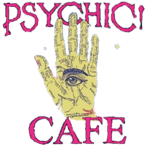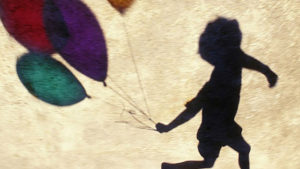
Photo: iStock
There are a million ways for a girl to get her mind right. Some nights she might permit her waist to recklessly abandon it all on a dance floor. Some days it requires a flight to blue skies and even bluer waters (funds permitting). Many times, though, it happens in someone’s chair. A therapist’s. A hairstylist’s. Her mama’s or her best friend’s. Healing comes in countless forms.
That’s exactly why I recently embarked on a journey to discover a system of go-to mental health practices I could commit to, a collection of resources that fit perfectly for me. Being that black folk are an innately spiritual and musical people who embody the idea of continuous movement forward, I explored treatments rooted in Eastern, African and indigenous medicine. Without discounting the importance of traditional medical treatment for serious or severe bouts of mental illness, I suspected that these would be nice additions to traditional therapy in that they align with my most natural way of being, coping and surviving. And, I wasn’t wrong.
After much seeking, I found a few bespoke, magical black girl remedies for optimal mental health.
Sound Healing
I’ve always known there was something about Jhené Aiko’s music but could not put my finger on it—Is it the weed? The kimonos? The alkaline water? I’d ask myself. Whatever it is, her music always drifts beyond the melodic into the transcendental. Her entire body of work balances meditation and “ratchet lite,” a perfectly rolled J for your ears, if you will. It wasn’t until I watched her play her crystal singing bowls that I realized sound healing is a thing.
Naturally, I had to dig in to understand how melodies and rhythms, the universal language of black folk, can actually help heal our blues.
“Quantum science tells us we are made of energy, of sound vibration and light. Every organ, every cell of our human system has a vibration,” says Jeralyn Glass, a Los Angeles-based international sound healer who has performed for everyone from Kobe Bryant to Marianne Williamson. “Sound can bring clarity of mind and calmness just as talk therapy can, and [it also] works on the subconscious to release held patterns.”
A sound healing session is not logistically dissimilar from what one can expect from a spa massage. Typically, the healer will start with a conversation, to get a sense of where the client is lacking and to determine which singing bowls to begin using. Together, the healer and patient then set a “frequency and intention” for the session by naming what they hope to achieve and selecting a tone. From there, patients are “bathed in” a varietal of sounds that are played above their entire body from head to toe. Not only is the experience deeply soothing, but it also can feel like a release from those things that typically feel most triggering—a manifestation of letting go and letting the music move you.
Not surprisingly, indigenous and African people have long used sound healing as a mental health practice.
“The use of sound healing has been documented in many ancient cultures, used by the aborigines over 80,000 years ago to mend broken bones and restore a body to balance; by ancient indigenous cultures, the ancient Egyptians, and eastern culture has used toning and mantra for centuries to bring inner peace and harmony,” Glass explains.
After my session, I certainly felt a peace beyond what I’d typically get from a few electric slides or late night ciphers to the tunes of Jhené. In fact, shortly thereafter, I may or may not have found myself down an Amazon rabbithole, searching for my own crystal singing bowls. I could do this every night.
Reiki
What’s there left to say about Reiki that hasn’t been said by every New Age girl with locs you meet at yoga? Apparently, a lot.
A Japanese word, Reiki, quite literally translates to “higher intelligence” and “energy that flows through all life,” Shuhada Alauddin, a healer who uses Reiki to help her clients professionally, tells me.
The words “energy” and “flow” have been so over-appropriated that frankly, I had no clue what to expect. Imagine my surprise when it turned out to be a lot like a powerful, yet unburdensome, talk therapy session. Strong emotions came out freely and easily despite me hardly speaking at all during the session; the healer pulled my innermost thoughts and feelings out for me.
“Therapy is an outside-in way of working. It works from the intellect, which can lead to an emotional and energetic shift,” Rachael Ferrera, a Belizean-American Reiki healer based in New York, explains. “Reiki is an inside-out way of working. It works energetically, which then leads to shifts in emotions, intellect, and actions.”
Sessions usually involve laying or sitting with your eyes closed and not speaking. Afterward, you feel as though you’ve awakened from a restful sleep. That is when the healer will share what insights they received from their patient’s energy and “higher consciousness, angels, spirit guides, subconscious beliefs and chakras.”
For some, it may all sound very “woo-woo,” but Ferrera’s insights read like a page from The Book of My Brain. She was able to feel much of what I’d been struggling with and reflect on it with actionable and passive suggestions for the future.
I’m 100 percent clear now why the New Age girls love Reiki. It is made for the moments when you don’t have words, but you have all the feelings.
EFT (Emotional Freedom Technique)
This healing type is a bit more hands on. Literally.
The process of EFT is rooted in physically tapping (as if “unlocking” yourself the way you do your iPhone eighty-five times a day) on acupressure points on your body while repeating affirmations. Of the many non-traditional ways of “getting your healing,” this one—as bizarre as it sounds—turned out to be most immediately impactful for me.
“EFT removes things that are stored in your physical body, in your cells,” Jenn Bovee, a 20-year veteran counselor explained to me. “While EFT may have started out as an Eastern medicine technique, every day there are more and more research studies proving the validity of EFT.”
Facts. Studies have shown EFT to be a powerful tool in overcoming PTSD, which, I, like many in our community, certainly have suffered from.
I did my first session over the phone and focused on trying to heal trauma from my mother’s passing in 1999. The session began with a lot of me sharing the things that trigger me while repeating “I still love and accept myself” after each confession. I talked through the day of her death —something I’d done many times over in therapy—while simultaneously tapping on several points on my face and body as guided by my coach.
When people say pain and trauma can be held in your physical body, they ain’t never lie. By the end of the session, I felt a significant release from my chest; years of weight lifted. This all happened in a single sixty-minute session.
That’s all it took to make me a believer; it was the cherry on top of my newfound recipes for sustained mental wellness.




